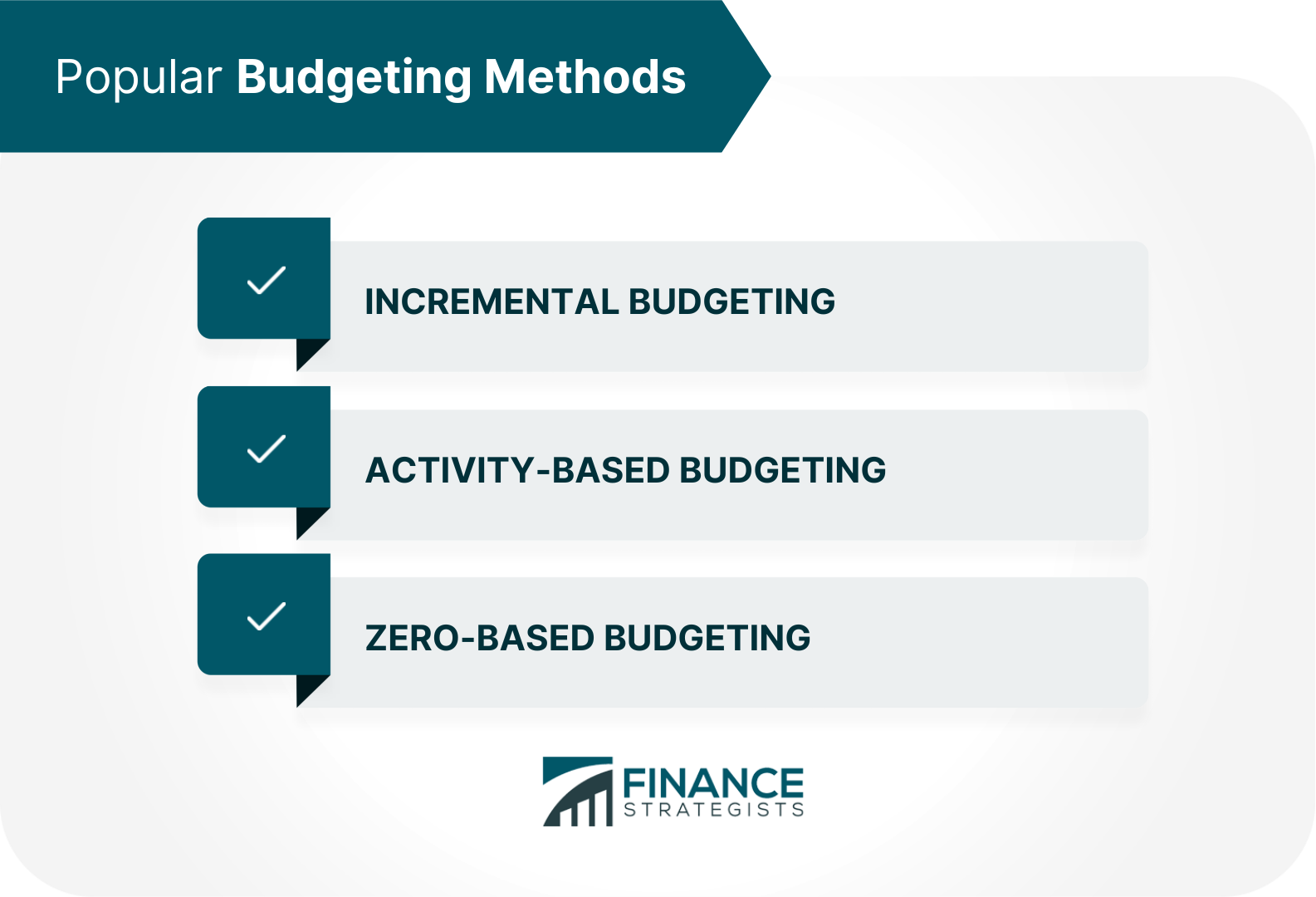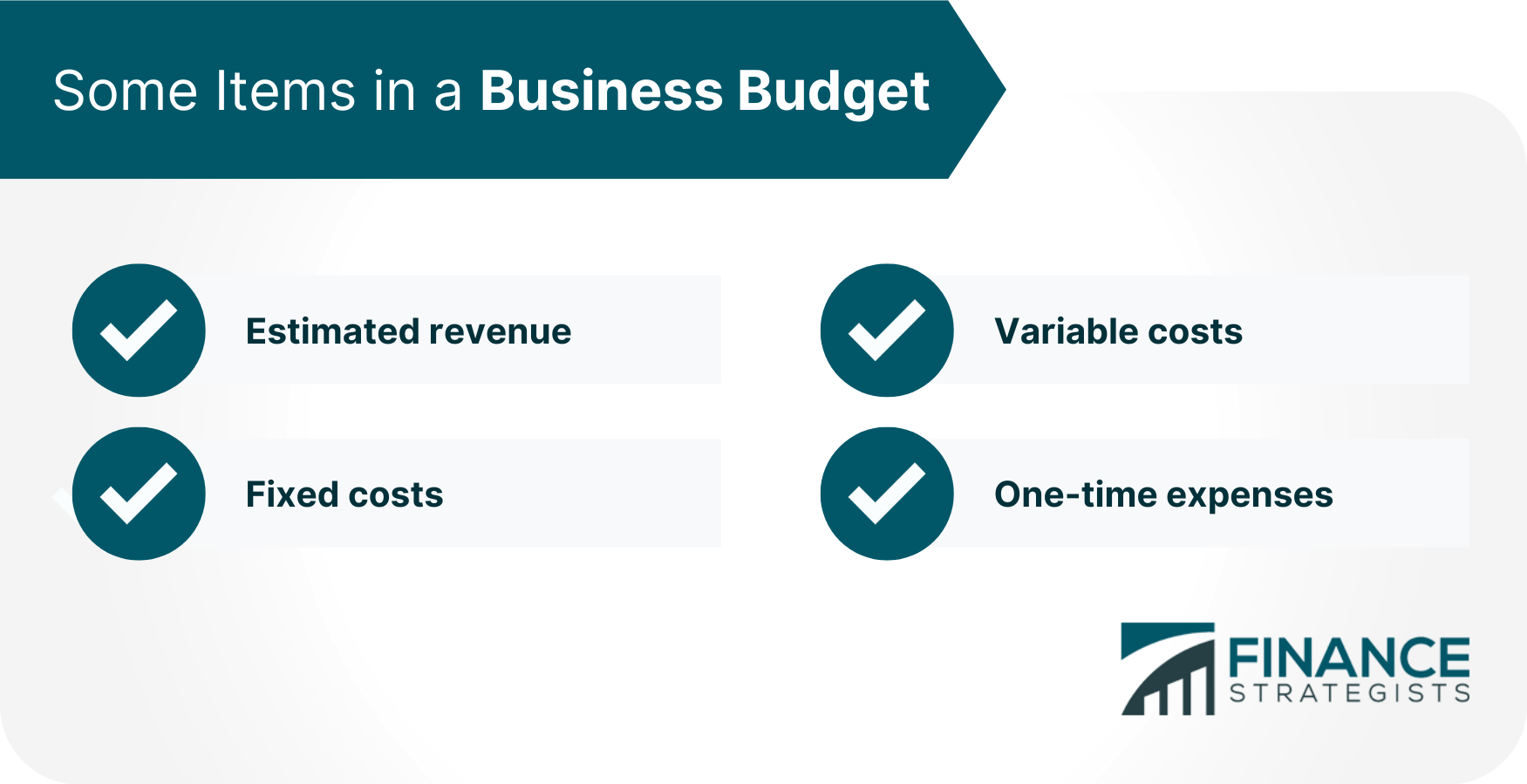A budget is a financial plan for a specified period. It is an estimate of expenses a party will incur, usually broken out by category, for the purpose of providing a roadmap that the party should follow. Budgets can be for a person or for a business. The former type of budget can be as easy as maintaining a daily tally of income and expenses. The latter can be a relatively complex construction, depending on the business establishment or company. Regardless of the budget type, the basic process to create one remains the same. It consists of analyzing expenses and matching them to existing or future income sources. While budgets are useful for individuals, they are necessary for larger entities such as corporations and governments which require coordination between multiple people and initiatives. Budgets are essential to goal setting. These goals can be personal or professional. Consider the case of an entrepreneur interested in opening a café. Before actually embarking on the venture, she would need to create a budget. This budget will have entries for her estimates about spending on equipment, furniture and other expenses. Those entries are balanced by future income estimates to determine a breakeven time horizon for her investments. A corporate budget is an encapsulation of a company’s financial position at a specific point in time. It is used to plan future money outlays for various activities within an organization. It also determines future income because these activities are meant to boost sales. The variance between estimated and actual spending helps establish a baseline for company performance. Budgeting on an individual level can be as simple as tracking all sources of income and expenses, then making sure that more money is coming in than is going out. For more detailed budgeting, you can plan your needs and wants based on your estimated income or the amount you expect to earn over the course of the budget’s time period. Your needs are the absolute essential items that cannot escape spending. For example, rent and electric bills are budgetary needs because you need a shelter over your head and electricity in your home. Grocery spending is also an essential item because food is a basic necessity of life. Thus, spending on needs is non-negotiable, meaning you cannot not choose to spend on them. Wants, on the other hand, are optional items. You have a choice as far as spending on wants is concerned. For example, you have the choice of spending on new clothing or electronics. They are not necessary for survival. After you have identified your needs and wants, choose the budgeting method that you will employ to estimate and keep track of your expenses. Popular budgeting methods include incremental budgeting, activity-based budgeting, and zero-based budgeting. Each of these methods has its pros and cons. For example, incremental budgeting is useful in situations where both income and expenses increase by a predictable amount each year. On the other hand, zero-based budgeting can be useful to cut down on costs because each line item spending in this budgeting method requires justification. The process to craft a business budget is similar to the one for personal budgets in that it requires collecting information about estimates for spending and expenses. However, because companies have multiple needs and wants at the same time, a business budget has many components. Some of the line items that you can expect to see in a business budget are as follows: Creating a business budget begins by making some assumptions and financial projections about the upcoming period. These include estimations of sales trends (or income), cost trends (or expenses), and the overall outlook of the market for the particular industry or sector. Businesses create both sales and expense budget. Each of these budgets gets compiled into a master budget.Creating a Budget


Budget FAQs
A budget is an estimate of expenses a party will incur, usually broken out by category, for the purpose of providing a roadmap that the party should follow.
A budget contains all sources of income and expenditures, both fixed and variable, for a given period of time.
Budgets allow both people and businesses to plan for the future and get an idea of where they stand financially.
The goal of a personal or family budget is to plan for both day to day expenses as well as larger expenses like the birth of a child, college, retirement, emergencies, and vacations.
Popular budgeting methods include incremental budgeting, activity-based budgeting, and zero-based budgeting. Each of these methods has its pros and cons.
True Tamplin is a published author, public speaker, CEO of UpDigital, and founder of Finance Strategists.
True is a Certified Educator in Personal Finance (CEPF®), author of The Handy Financial Ratios Guide, a member of the Society for Advancing Business Editing and Writing, contributes to his financial education site, Finance Strategists, and has spoken to various financial communities such as the CFA Institute, as well as university students like his Alma mater, Biola University, where he received a bachelor of science in business and data analytics.
To learn more about True, visit his personal website or view his author profiles on Amazon, Nasdaq and Forbes.















